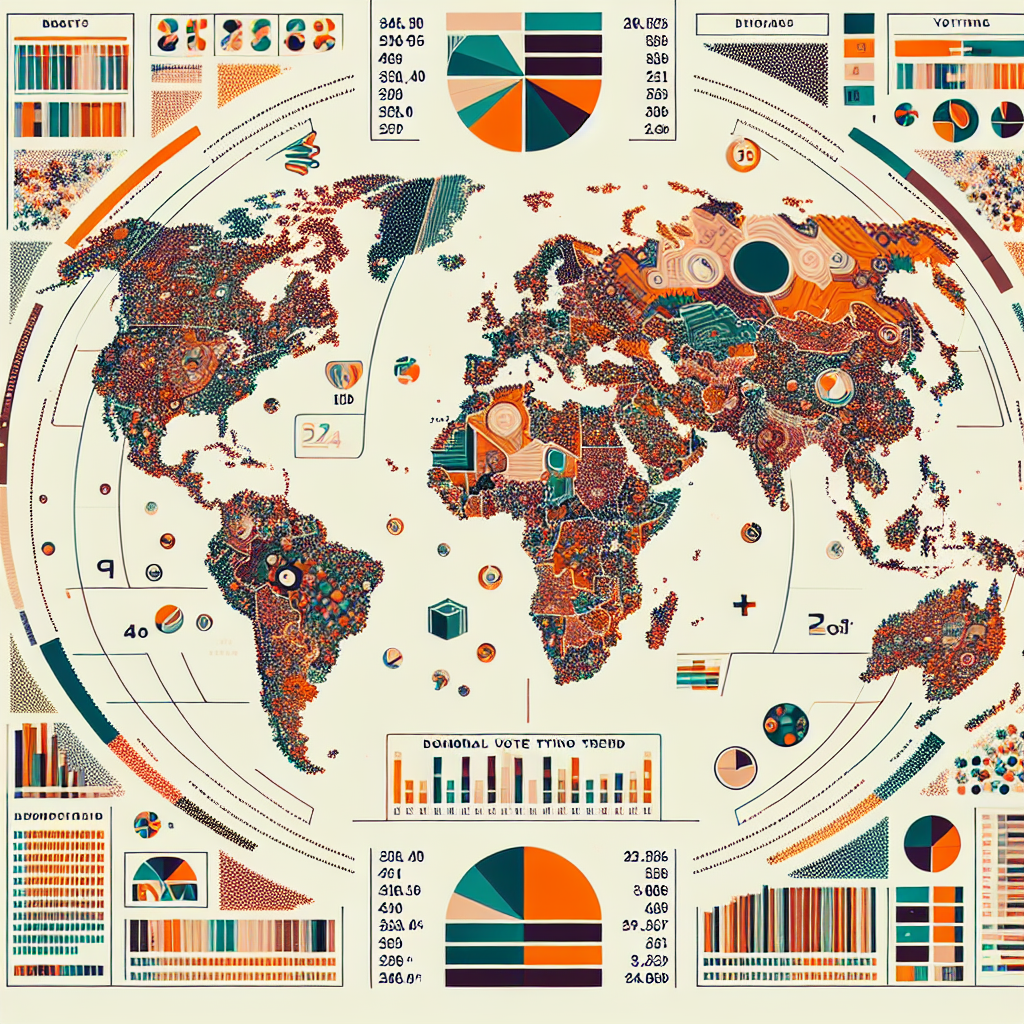Global Voting Trends of 2024
Global Voting Trends of 2024
Introduction
The year 2024 marks a pivotal moment in global politics, with significant shifts in voting patterns observed across various regions. This summary delves into the key trends shaping the electoral landscape, offering insights into the factors driving these changes and their potential implications.
Key Trends in Global Voting
Rise of Youth Participation
Younger generations are increasingly influencing election outcomes, driven by their engagement with social issues and digital platforms.
- Increased voter turnout among millennials and Gen Z.
- Focus on climate change, social justice, and digital rights.
- Utilization of social media for political mobilization.
Technological Integration in Voting
Technology continues to transform the voting process, enhancing accessibility and security.
- Expansion of online and mobile voting options.
- Implementation of blockchain for secure voting systems.
- Use of AI for voter registration and fraud detection.
Shift Towards Populism and Nationalism
Populist and nationalist movements are gaining traction, reflecting a shift in public sentiment.
- Increased support for candidates with nationalist agendas.
- Emphasis on domestic policies over global cooperation.
- Rising skepticism towards traditional political establishments.
Regional Insights
Europe
European elections are witnessing a fragmentation of traditional party systems, with a surge in support for green and far-right parties.
Asia
In Asia, economic concerns and regional security issues are dominating electoral discussions, influencing voter preferences.
Americas
The Americas are experiencing a polarization of political ideologies, with significant divides between urban and rural voters.
Conclusion
The global voting trends of 2024 highlight a dynamic and evolving political landscape. Key takeaways include the growing influence of younger voters, the integration of technology in the electoral process, and the rise of populist and nationalist sentiments. These trends underscore the importance of adapting to changing voter priorities and leveraging technology to enhance democratic participation.


















